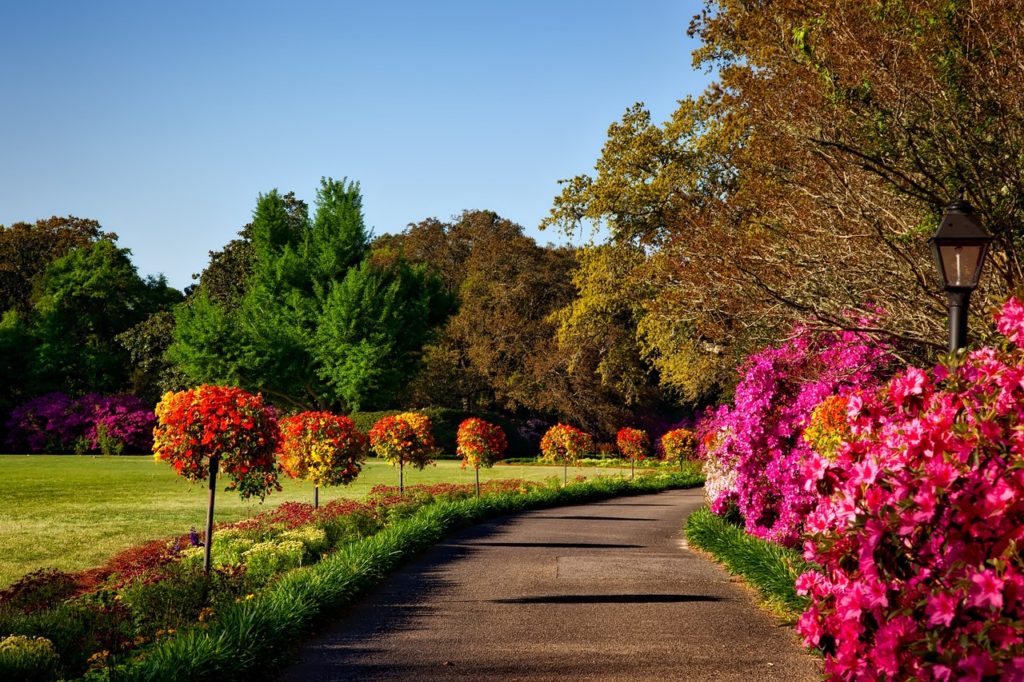Basements flooding isn’t uncommon for homeowners living in states with harsh winters or frequent rainstorms. In 2020 alone, 75,000 previously flood-free properties in Chicago have reported problems with flooding. With the rising frequency of floods in the country, it’s no wonder that homeowners are treating floods as a common occurrence. However, floods will not only damage your belongings, but your home’s value will depreciate as well.
Houses with basements akin to a swamp and yards overflowed with water are a huge red flag to potential home buyers. After all, owning a home with a wet basement involves; increased pay for insurance, frequent acquisition of services to remove mould, and constant repair of broken drywall.
Wet basements are a nightmare for homeowners and homebuyers alike. Fortunately, there’s a countermeasure that eliminates flooding and improves your house’s value at the same time—landscaping.
Get your work gear like ear protection and gloves ready because after reading through this, you’ll be making a lot of changes in your yard!
How Landscaping Can Prevent Flooding
Landscaping isn’t all about hand-built patios and pergolas for your leisure. It’s more than that. When designing your yard features, cultivating plants and trees is necessary to enhance the yard’s appeal and the environment.
You might have outlined your yard’s landscape for aesthetics. Still, the trees and shrubs you meticulously arranged, as well as the services for residential mowing you acquired, will help stop soil degradation and filter out pollutants from floods.
Furthermore, landscaping provides you the opportunity to position walkways that will direct rainwater away from your house. While installing paths, you can easily route a subsurface drainage system to proper sewage channels. Additionally, you can create a grass barrier alongside the drainage system to ensure the water flows away from your home.
Landscaping Features to Keep in Mind
Use the Right Plants That Are Built for Flood Control
If you’re looking to improve your lawn’s aesthetic, there are numerous plants you can choose from, forsythias to fescues, or even blueberries. But, if you’re looking to prevent floods, you have to select the correct plants specifically designed for flood control. And the first plant you should add to your yard is—native grass.
Well, adding grass should be evident for landscaping, but what I’m specifically talking about are grasses that are local to the vicinity that doesn’t use fertilisers and top-of-the-line weeding. Native grasses are often more rigid and more resistant to the environment. When taking care of your lawn, you should use organic fertilisers and weed them out by hand, not by chemicals. Using native grasses won’t win you the most-unique-lawn in your neighbourhood, but it provides practicality that foreign grasses don’t offer. After all, the best-looking landscape is a lawn that’s both functional and attractive.
Choosing the right vegetation to add to your garden can be difficult when you’re planning to prevent floods. You’ll be juggling between different kinds of flora to plant, but use locally sourced plants when in doubt. Plants accustomed to your environment’s soil will reap better benefits, for they have sturdier root networks.
If you’re looking for a decorative way to incorporate this in your yard, add rain gardens. Rain gardens are a concave part of the lawn that collects rainwater. Try planting flowers that can withstand heavy rain in your rain garden for a cost-effective and attractive way to redirect rainwater.
Ensure You Have a Proper Drainage System
When designing your landscape, you should foresee your lawn’s grading and verify if the water will flow away from your house. If you have an existing property, check for your lawn’s inclination and scrutinise where the probable rainwater will pool. Keep in mind that the ground should incline away from your house to ensure that your home is safe from rain.
Additionally, while positioning your garden, use a mulch to divert the water flow far off from your house. Ideally, the mulch should be about three to four inches in height and should place mulch six inches (or more) from your house’s walls. With this, you can guarantee that the mulch can absorb as much rainwater as possible, and the moisture from all the water buildup in the mulch won’t damage your house’s lining in the process.
Finally, utilise the power of rain barrels. Albeit not the prettiest of sights, you can use rain barrels to capture rainwater directly from your roof. Not only will this completely capture water from the rain, but you can also use the reservoir to water your plants.
Typical landscaping is hard work and challenging, but landscaping to prevent floods? Even more so. While tinkering with your landscaping to prevent floods is proven to work, you need to have your wallet and body prepared. So, it’s wise to research and plan for the local plants available to you, your lawn’s grading, and what features you need to nix. After all, a flood-free basement and yard will increase your home’s value and save you from future troubles.


